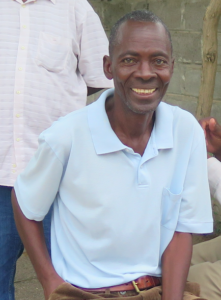 12th July 2022. James Nyasulu, the much respected Zambian grassroots activist and former miners union leader, and partner of Foil Vedanta, died in hospital in Lusaka on 30th March 2022 from kidney failure.
12th July 2022. James Nyasulu, the much respected Zambian grassroots activist and former miners union leader, and partner of Foil Vedanta, died in hospital in Lusaka on 30th March 2022 from kidney failure.
Though not known as a household name in Zambia, James Nyasulu dedicated his life to justice and fairness for the communities around Kitwe and Chingola in the Copperbelt. He rose to international notoriety in 2011 after leading 2000 people from poor communities along the River Kafue, who had been seriously affected by a major pollution incident originating from Konkola Copper Mines (KCM), through the legal system to get compensation for the severe damage to their health and farmland. The case was later taken up by international human rights lawyers, who, with the help of James and others, successfully established the right for the claimants to have their case against KCM’s parent company Vedanta Resources for ongoing pollution and harm to health and livelihoods heard in the UK.
James was an extremely dedicated activist with a passion for justice that drove him to spend much of his time campaigning tirelessly against local corruption, and for some of Zambia’s poorest communities whose lives had been ruined by years of gross pollution to their water and land. He was very intelligent, meticulous and determined, and could undoubtedly have been very financially well off if this had been his orientation. Yet he died with very modest means, but having lived a rich life of community, purpose and meaning. He is survived by seven children and his wife Agnes.
His life story (in brief below) tells of the positive impact one person with determination and conviction can have on society. May there be many more like him in Zambia and elsewhere!
James Nyasulu was born in Mufulira in 1958. His father tragically died in 1966 and he was subsequently cared for by his uncle, who impressed upon him not to become a miner due to the terrible working conditions. However Nyasulu didn’t get on well with his uncle and an American white missionary (Jim Connelly) ended up informally adopting him at Kitwe Boys Secondary School, where he was the only black student in his class in 1975 (11 years after independence!).
In 1975 he finished secondary school and decided not to go to Seminary and become a minister as Jim Connelly wished. He saw that his other siblings were suffering and wanted to go into employment to help them financially. He decided to train to become a teacher but first had to do six months military service because of apartheid in South Africa and threat of war. He attended Malcolm Moffat teacher training college and continued to stay with Jim Connelly at Riverside Church in Kitwe. In 1979 he joined the Ministry of Education as a primary teacher at Rokana Primary School (now Kitwe main school).
However his passion for justice and his activist spirit soon became apparent. He (along with his friend Fabian Zulu) began to see how the Unions were trying to levy money from parents illegally and raised this issue. In response the unions transferred him to North Western province, near Ngala, which he found very remote and provincial as he was used to being with English people and in more cosmopolitan towns.
In 1982 he resigned from Ministry of Education and became an educationalist at Zambia National Breweries until 1987, when he quit before the company liquidated, and finally joined the mines in 1989 at Mutondo Central Services division (Nchanga) where he was trained and “had the privilege to go underground and do some mining”. In 1996 he stood for the Mineworkers Union of Zambia and quickly became branch chairman for Nchanga mine, speaking for 12,900 workers.
James was proud to say that “during my term of office I never lost any member of the Union” despite strict rules about dismissal. Instead of letting the mines fire workers for late return to work Nyasulu would always persuade management to take workers back by pleading for their family circumstances and poverty, even in the case of stealing. He understood that when miners were late they were usually seeing their families in the regions, from which telegrams could take 10-15 days to arrive in those days.
Some workers were losing teeth due to acid fumes from the tailings ponds. The management would give them milk to lessen the impact but would do nothing to stop it.
One serious case Nyasulu dealt with as a Union chairman involved stolen copper being planted on workers by a corrupt manager along with others. 30 workers were in the cells awaiting prosecution but James managed to have them released by persuading managers that the workers were innocent and had been instructed by the corrupt manager whose truck was being used.
When privatisation came in 2000, 9000 workers from Nchanga division were retrenched and Nyasulu also took retirement. The mines were offering workers houses instead of retirement/retrenchment benefits. “If I had moved into a bigger house offered by the mines I would have got nothing in terminal benefits, but I had already decided against that as I didn’t want to be that sort of leader that profits from his position.”
Instead he used the retirement benefits to pay for his daughter to go to University and rented three limas of land to grow groundnuts and later maize and poultry to provide an income.
In 2004 James made his first foray into local activism when the municipal council tried to increase their tax rates illegally. He contacted an old friend who had become a magistrate and found that the council had breached the statutes, so he took a writ of summons in the subordinate court soliciting the help of some local friends, a group of former miners who would become ‘the committee’ which worked alongside him in the pollution case. He eventually won against the councils lawyers, “exposing some of their tricks along the way”, and got his costs covered.
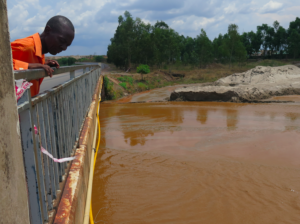
In September 2004 James got access to an unpublished report about a water pollution incident by Konkola Copper Mines. Local water company Mulonga Water denied any knowledge of the event and no action had been taken by the mining company either so he again took a writ of summons against Mulonga Water in the subordinate court (which in those days only cost 8 Kwacha). In addition he took a motion against KCM for allowing the report to be leaked and alarming people. He used this threat to demand that KCM stood by their own report against Mulonga water in court otherwise he would sue them for leaking it. He also summoned two doctors and a public health officer too, with threats that he would sue them if they didn’t tell the truth about the report. When the matter was tried he withdrew motion against KCM and they did tell the truth about the report. Mulonga were convicted and damages were awarded to 139 claimants. Later they claimed only the two with medical documents were entitled.
On 5th November 2006 James himself became one of the thousands of victims of a major pollution incident from KCM’s mines, which literally turned the Kafue into a ‘river of acid’.
He described how he got up in morning and drank 1.5 litres of tap water as usual. Two hours later he had very bad stomach and abdominal pains. He went to the clinic and was given magnesium medication and felt better. On 6th November he didn’t feel like breakfast and at 17/18hrs was feeling drowsy and feeling sick. He went to the local clinic who sent him to the hospital. The doctor told him not to drink any tap water, but only saline solution, and put him on a drip.
On 8th November KCM (owned by British multinational Vedanta Resources Plc) finally admitted to reporters that there had been a major pollution incident. Water was subsequently cut off for the whole district from 8th until 18th November. When James was discharged from hospital on 10th November having heard the news, he tried to get a medical report and lab results from the doctors who refused him. Friends working in the hospital told him that many villagers had come from Hippo Pool, a village very close to the outlet pipes from the mine and smelter. On 13th November he walked 15km to Hippo Pool village to investigate the matter. Many people were still in clinics and those discharged had also been refused medical records.
In the following weeks as the seriousness of the incident became clear James started to gather evidence and a group of friends and former miner colleagues around him who could help to try to get justice for themselves and the worst affected villagers. Two friends who still worked for KCM confirmed that a very serious incident had occurred in which pure acid had been released into the environment over 48 hours. He made contact with an old friend from Mufulira, a retired magistrate called Kelvin Bwalya who advised him on the seriousness of the incident and offered to take the case pro-bono.
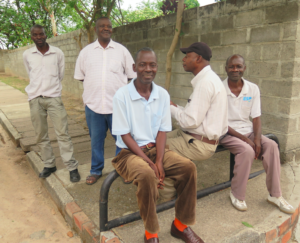
The group of friends spent several weeks cycling two and from the worst affected areas holding meetings encouraging affected people to join together into a mass legal case. In Kabundi South 500 people attended, and many more in Nchanga North. Many of these areas had very few homes on piped water, and residents had consumed extremely polluted groundwater. In Chiwempala police disrupted the meeting leading to a riot. By this time the group had over 4000 people signed up, but when they reached the worst affected villages of Shimulala and Hippo Pool residents reported that KCM had already come to them with an offer for an out of court settlement and couldn’t add their names. A further 2000 people subsequently retracted their involvement following out of court offers from KCM.
On 27th December 2006 the group, now made up of 2001 people, filed their case in the Lusaka High Court. The case was made against three defendants – Chingola Municipal Council for failing to warn people of the pollution, Environmental Council of Zambia for failing to regulate KCM, and KCM themselves.
The first proper hearing in front of Judge Phillip Musonda was not held until March 2009 due to delays and heel dragging by KCM and the legal system, but it would not be until January 2011 that a High Court ruling was finally made. In the landmark ruling (Nyasulu and Ors vs Konkola Copper Mines Plc and Ors, Jan 2011) the 2001 claimants were awarded a total of $2 million and judge Justice Musonda found KCM guilty of ‘gross recklessness’ and turning ‘the residents of Chingola into Guinea Pigs’. He stated that KCM had acted with ‘impunity and immunity’ as they had been ‘shielded from criminal prosecution by political connections and financial influence, which put them beyond the pale of criminal justice’.
Before and after each hearing Nyasulu and ‘the Committee’ would go to see all the communities, often walking between them, taking five or six days to cover all of them. Nyasulu told us:
“Before and after court session we visited the communities. We never asked any money from them and never took any penny from them to support our movements. We just wanted them to know what we were doing and where it was going.”
Money was raised from the Committee’s own pockets and through their families and supportive friends in their communities.
“People who respected and trusted our work would always give freely. It was very easy to raise money.”
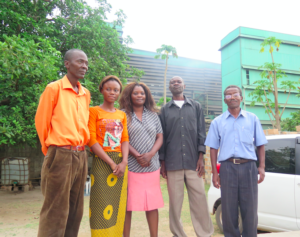
Tragically, the case was appealed by KCM and was not re-heard until 2015, when the Supreme Court upheld the guilty verdict against KCM but reduced the payable compensation to only 12 claimants who had medical records of injury. To date none of them have been able to claim in Zambia due to a lack of legal representation.
We (Foil Vedanta) got to know James Nyasulu in 2014, when we first visited Zambia to document what would turn out to be major tax evasion, pollution and human rights abuses at Vedanta’s operations there . International news reports gave the impression that the $2 million fine had been paid by Vedanta to communities, but when we met lawyer Kelvin Bwalya he informed us that the case had been stalled at appeal by political influence. We had not yet had the chance to meet James or the Committee but started holding protests at the Zambian High Commission in London demanding justice for the victims of pollution. It was some months later that we finally managed to make contact with him and later spent many weeks together in Chingola. The UK protests made international news and galvanised James and the Committee who had all but given up on the case. In the end it was a personal meeting with Zambian President Michael Sata in 2015 which unblocked the delays and enabled the Supreme Court hearing. Sadly, Sata himself had died before the grossly unfair judgment which reduced compensation payable to only those with medical records was made.
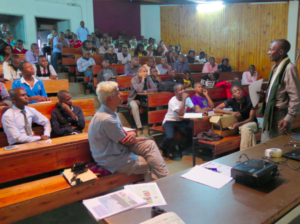
However international amplification of the plight of the polluted communities and the callous and criminal behaviour of Vedanta/KCM would bring a new dimension to the case as international human right law firms got involved. The story of their divisive impact on the communities is too long and complex to tell here though it must and shall be told. Suffice to say that James and the Committee spent many more years gathering evidence and working with the communities to take their case against KCM directly to the parent company Vedanta Resources Plc, a UK firm who had profited immensely from asset stripping, tax evading and corner cutting at KCM. In April 2019 after four years of hearings in various courts, Supreme Court Chief Justice Lady Hale and four further judges made a precedent ruling in the case Lungowe and Ors. v Vedanta Resources Plc and Konkola Copper Mines Plc [2019] that 1,826 villagers (with a further 1,500 represented by a different law firm) could have their case against Vedanta and KCM heard in the UK.
This landmark ruling has opened the door for victims of crimes by other British multinationals to take their cases to the UK parent company instead of being limited to suing the subsidiaries, who are often able to evade justice due to corruption and political influence in the country of operation. This incredible achievement which will affect many thousands of people affected by the worst pollution and human rights abuses all over the world would not have been possible without the thirteen plus years of dedicated legal activism led by James Nyasulu. Yet, his name is barely known and is certainly not credited in news reports sponsored by the international law firms who profited immensely from this notable case.
The Zambian villagers case against KCM for pollution was never actually heard in the UK after the right to do so was established. Instead the law firms settled out of court, paying each claimant only a percentage of the sum awarded, after covering costs of the case, with no requirement to remediate the extremely polluted land.
James’ last communications with us before he died described the anger felt by villagers who feel they have still been denied justice, and his own anger with the international law firms for exploiting their dire situation for their own gain and reputation.
There is still much work to do and we need many more James Nyasulus in this world with whom to do it.
Please circulate this story as widely as possible in Zambia as inspiration to the next generation of activists so desperately needed.